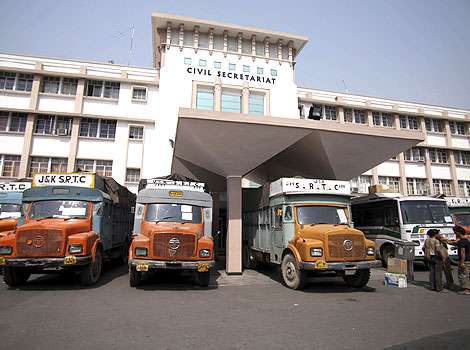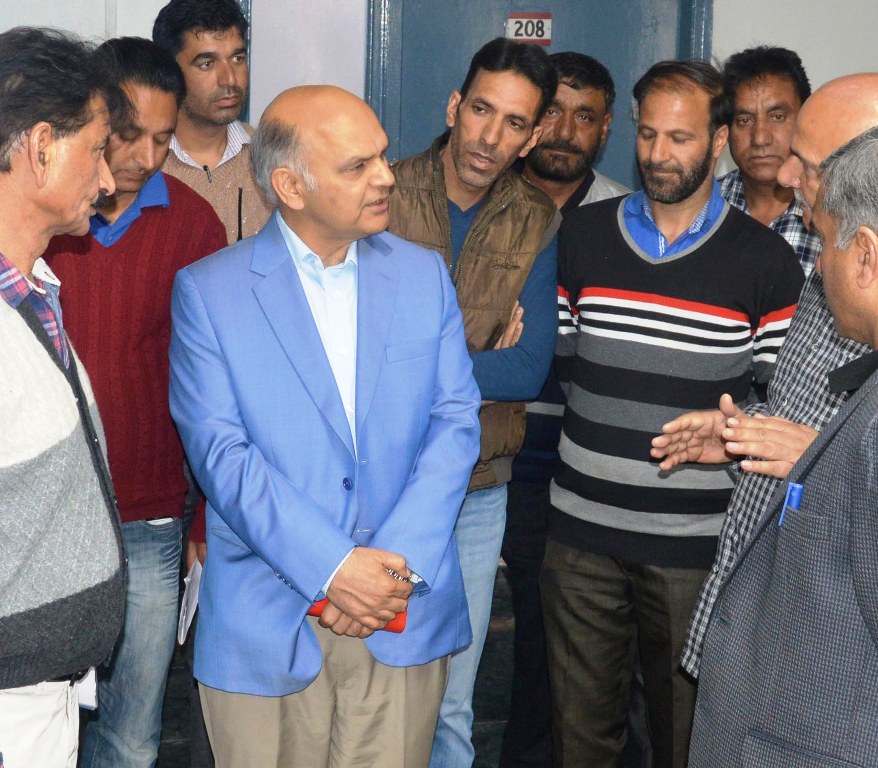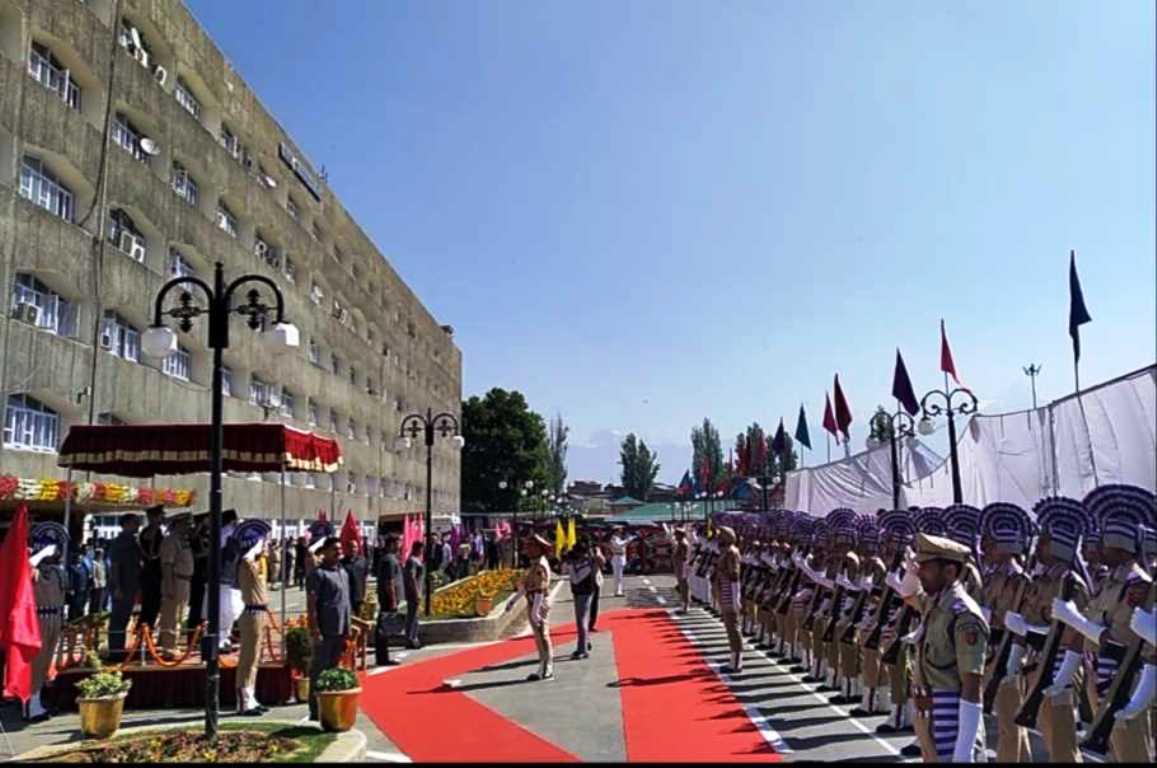Laced with revelations, in this piece Haseeb A Drabu makes a case for revitalising Srinagar, the city of Kashmir, without the crumbs and crutches of the government

From being an independent princely state under a monarch, Jammu and Kashmir was a legislatively empowered quasi-autonomous constituent unit of the India Union. Recently it was dismembered and downgraded to a centrally administered Union Territory.
In all these forms, the government whether anointed or appointed, imposed or elected, administering or governing has one constant feature: the darbar move. While the nomenclature, a vestige of the monarchy hasn’t changed, the need for it has been constantly reinvented ever since it was started 148 years ago.
Great Games Outcome
Contrary to the popular belief, the reason for darbar move was not climatology: to escape the harsh winters of Kashmir Valley or the scorching summers of Jammu. Nor was it clairvoyance; the vision of Ranbir Singh. It was a compulsion; of the British to protect their Indian Empire.
The great game in the Pamirs and Hindukush, which put the Kashmir valley on the international map of Russians, was afoot in the mid-nineteenth century. By 1868 Russia had advanced in Central Asia and extended its influence to Samarkand. These movements created panic in Britain and made them alive to the strategic importance of the Kashmir valley.
Faced with the “Russian Peril”, darbar move was symbolic relocation for a strategic reason. It was the element of “forward policy” (also known as “spearhead capital policy”) of the British in the run-up to their agreement of 1873 with the Russians. This was the start of the process that culminated in the Kashmir valley becoming a frontline area of the British in 1889.
It was in this year Maharaja Pratap Singh was presented with an irshad to “voluntarily relinquish powers” to govern even as he continued to rule as the titular head! For the next 35 years, it was effectively British rule in “sentry state” of J&K. It was only in 1924 when the Russian threat had fully receded, were the powers of the Pratap Singh restored.
This circumstantial compulsion of British Imperialism to move the darbar has been constantly reinvented since 1948.

Unlike under monarchy, when the capital was declared wherever the Maharaja held court, in a democratic setup, the choice of Srinagar as the capital was obvious. Srinagar became the capital of J&K in 1948 because it had been the epicentre of the political expression which was shaped by a societal collectivity. The freedom struggle, conducted as an anti-monarchy political movement had been carried out here since 1931. All the civil society institutions which powered the freedom struggle were based in Srinagar. The de facto capital was given a de jure status. It was a signal — a culturally functional one – expressing the basis and nature of the strength of the public authority.
It was loaded with political meaning and symbolic connotations. It reflected the reality of the changed power system and structure; a peoples capital as against a monarch’s capital.
However, at a time when the state was under attack and close to disintegrating, a reference of the dispute to the United Nations, to protect the state and its integrity, the tradition of darbar move was continued. The other obvious reason being regard for the Duggar sensitivities, who were traumatised over the loss of power. To be sure, the darbar move had no legislative backing. It was only in 1992, that Jammu was formally made the winter capital.
Of course, the larger philosophy was to frame and propagate the common state origin and the expectation of a common state future. The August 5, 2019 restructuring of the state has debunked the former and jeopardised the latter. So why continue this meaningless, if not farcical exercise?
An Eroded Capital
Whether one likes it or not, much like Article 370, the substantive basis of Srinagar as a capital has been eroded over time. It has been emaciated by the successive governments at the centre. Its administrative importance starting dwindling in the 1980s and was completed in the 1990s. All the Central Government institutions, departments, agencies and undertakings have chosen to locate their regional offices in Jammu.
Same is the case with all the national and multi-national private companies or organizations. They too have their offices and business operations from out of Jammu. At the state level, all developmental departments have now been bifurcated on geographical lines.
A De Facto Capital
The reality today is that Jammu is the salient space of public authority and non-governmental action. In line with such a change, whatever the de jure status, the de facto capital has changed. Capitals, apart from administrative and material functional considerations, are the seats of political power and authority. Whenever that changes, capitals change.
As such, by continuing with the dual capital system, essentially as a placation, an illusion of a localized presence of political authority is being created. And a non-existent participative feeling constructed. The seemingly important event of darbar move is nothing but pointless political appeasement.

In any case, what has being the “summer capital” for the last 70 years done for Srinagar, its society, its local economy and its culture? Be in terms of provision of public services or urbanisation or the sheer aesthetics of the city.
Visually, the built environment is an aesthetic eyesore. In their publicity brochures, the tourism department once photoshopped images of the Dal to make it look clean! The dominant city narratives are bandhs, destruction and death. Children grow up cooped up in sans social connections and without global connectivity – a city where funeral are the only social gatherings. That’s what Srinagar has become.
An Insult
The adornments in the city are an insult to the genius of the local craftspersons. Be it the ghanta ghar, erected because Sheikh Abdullah saw it in Poona and ordered Bajaj to build it in Srinagar!Or the fountain outside the Radio Kashmir which despite being under an overpass now, is left there to be shamed. These discursive elements which are evocative of the megalomania have become a part of our built heritage.
The signifiers of Srinagar are reflective neither of our real and symbolic resources nor does echo the value and ethos of the people who live there. It showcases only the behavioural disdain of the ruling elite.
Obviously, the voices of Srinagar have not be been able to make themselves heard let alone get a more relevant sensibility to underline public authority. The result has been that these voices became shrill and got articulated in a different sphere.
For how long then are we to live with the idea of a “half capital”? It is time to stop thinking of being a capital city (that too by calendar rote!) as a tool to achieve something; it just makes Srinagar a government city. Not a city for its inhabitants. As the philosopher of cities, Italo Calvino, wrote, “You take delight, not in a city’s seven or seventy wonders, but in the answer, it gives to a question of yours.” Srinagar has lost its ability to answer.
A Commercial City

At a more practical level, given the fact that Srinagar is a nerve centre of economic production and distribution, it might be worthwhile to have Srinagar as the commercial capital of J&K. If it is driven by business and enterprise and not by babus and babudom, it will grow on the power of conviviality and resilience of its original vernacular. Not only will it get rid of the pervasive negativity, but it will also rediscover its own raison d’être beyond government.
The tragedy is that no political leader in Kashmir has the moral authority to say so. The Last of the Mohicans was Sheikh Abdullah who famously told Kashmiris to eat potatoes, not government subsidised rice!
Tail Piece
It is interesting that as the state of J&K shrinks, its capitals proliferate! In the nineteenth century, the 84,000 square mile state extended from Chitral in the north to Kathua in the south; Aksaichan in the east to Kohala in the west. It had one capital. By 1948, the state had shrunk administratively, the capitals multiplied to two.
By 2019, the same state which was split now has four capitals! Wondering how? Leh is the summer and Kargil the winter capital of Ladakh. Even in its dismembering J&K state has produced two Union Territory with two capitals each! A unique feat. That the area under control now is not even one-third of the original state is a just a factoid.
(Author, an economist, is former finance ministers of the state. The essay appeared in Greater Kashmir first. Ideas are personal.)















